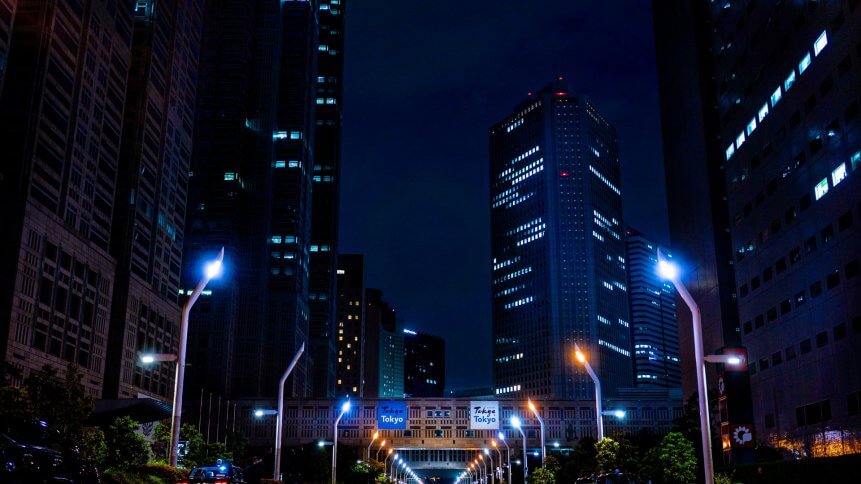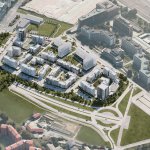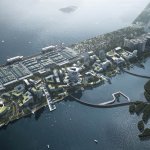Adopting a Society 5.0 philosophy to ease city living

- More than half of the world’s population is predicted to reside in urban areas by 2050
- Japan’s ideology of a Society 5.0 looks at the inextricably linked relationship between people and technology
According to a United Nation study undertaken by their Department of Economic and Social Affairs, it’s forecast that by 2050, 68% of the world’s population is expected to live in urban areas. The study also estimated that their will be 43 megacities cropping up around the world, housing over 10 million inhabitants by the next decade.
Sustaining and managing a healthy urban growth will be more important than ever as more than half of the world’s population will reside in cities. Many countries face challenges in keeping up with the rapid pace of urbanization, including housing, employment, mobility, energy systems, and other infrastructure.
While we are in the midst of Industrial Revolution 4.0, emerging technology like AI, blockchain, cloud, robotics, and big data is expected to facilitate urbanization. Though access to such advancements has meant that tech titans have been able to build empires and communities are thriving with the installment of 5G towers, the unequal speed of digital transformation has contributed to the growing disparity in accessibility to these technologies, leading to social exclusion and a widening gap between those that have, and those that have not.
As an example, the mass migration to working remotely has highlighted the disparity in access to stable internet connections and home office equipment – something that directly impacts an employee’s ability to work effectively. These circumstances disfavor communities from specific economic classes and regions.
Society 5.0
In a bid to counteract the possible negative effects, the Japanese government has proposed the concept of ‘Society 5.0’. A vision where digital transformation is based on humanistic goals and benefits, empowering the dreams of individuals and creating a more inclusive society.
Yuko Harayama described the pillars of Society 5.0 as being founded on its predecessor, Society 4.0 – a model that merits information and the value it brings. As people face the challenge of managing, analyzing, and extracting intelligence from the sea of data, working hand in hand with technology will be key.
Harayama, a former Executive Member of the Council for Science, Technology and Innovation, explained in an interview with Hitachi that Society 4.0 is “an information society that realizes increasing added value by connecting intangible assets as information networks.” Harayama continued, “Society 5.0 is an information society built upon Society 4.0, aiming for a prosperous human-centered society.”
Society 5.0 aims to achieve “a high degree of convergence between cyberspace (virtual space) and physical space (real space).” It is believed that a hyper-connectivity between people, devices, and systems will be realized wherein data stored in the virtual space (like in the cloud) will be instantaneously processed by AI and fed back to individuals in the physical space. Imagine this process as a norm and applicable to all aspects of everyday life.
The possibilities? Well, they’re infinite.
Let’s start with one of the most important issues that cause US$300 billion financial losses every year in the US alone — sitting. City dwellers are found to spend more than 100 hours each year sitting in traffic, precious time that could be used for more productive and meaningful activities.
Cities like Columbus, Ohio are wired with vehicle to infrastructure (V2I) technology, with the goal of combating traffic congestion. V2I technology is a communication framework that allows vehicles to share information with a myriad of devices that supports the highway infrastructure. The devices, including streetlights, cameras, signs, and parking meters, aims to utilize data from vehicles to improve the timing of traffic lights and, essentially, reduce congestion.
Similarly, Barcelona has utilized the power of IoT (internet of things) since 2012 to enhance its transportation system. The bus network in Barcelona is efficient and environmentally friendly, with smart bus shelters embedded with solar panels and interactive touch screens showing waiting times. There are smart parking sensors that allow drivers to locate free spaces, reducing carbon emission when cruising the streets for parking. These schemes of mobility enhancements are only the beginning.
This April, Barcelona’s transport system (Transports Metropolitans de Barcelona) and local telecom Telefónica Mediapro Group, launched a pilot program to spearhead next-gen tourism. First of its kind, the 5G AR (augmented reality) project aims to transform the traditional tour bus concept with the integration of digital content. Participants of the project were shown AR displays of information superimposed on iconic landmarks and landscape while touring.

Traffic congestion leads to a massive loss of productive hours. Source: Shutterstock
In relation to Society 5.0, the transportation initiatives aim to tackle one of the major challenges of city dwellers and enable inhabitants to travel safely and comfortably, whether it’s walking, cycling, hoverboard-ing, or driving. Society 5.0 also leverages technology for higher living standards and increased fulfillment in life. Much like Maslow’s hierarchy of needs, once basic needs of security, safety are achieved, one can aspire for more aesthetic pursuits.
At its core, Society 5.0 emphasizes on the idea of bridging the two worlds — physical and virtual — closer and ensuring the additional value from emerging technologies are used for the greater good of society.










